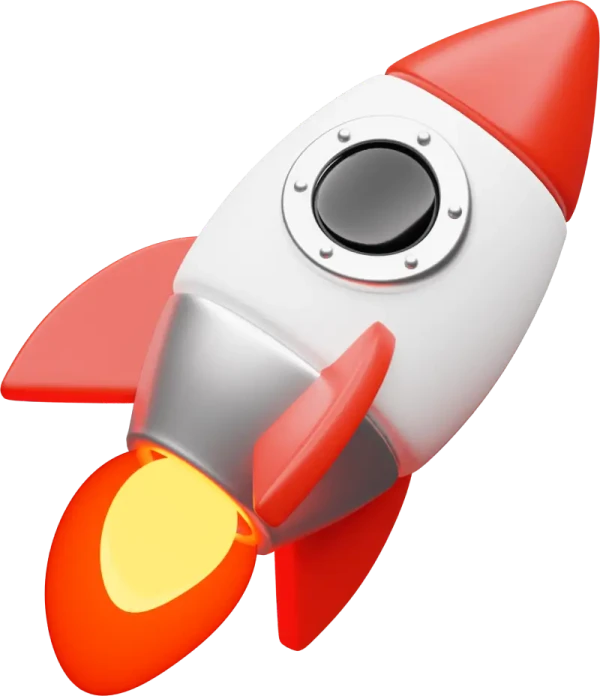Before you can even think about measuring an event, you have to know what you're measuring against. It's a simple concept, but it's where most event strategies fall apart.
The real question isn't, "Was our event a success?" It's, "Did the event do the specific thing we needed it to do for the business?" And trust me, the answer is wildly different for every single company and every single event.
Defining Your Event's Version of Success
I've seen it a hundred times. A team celebrates a "sold-out" conference, but when you dig in, you find out their actual goal was to attract a dozen enterprise-level leads. Instead, they got a room full of students. On paper, it was a hit. In reality, it completely missed the mark.
Success is relative. It has to be directly bolted onto your overarching business strategy, or you're just throwing a party and hoping for the best.
Aligning Goals with Business Objectives
This is the first, non-negotiable step. You need to draw a straight line from your event's purpose to your company's big-picture goals. When you get this right, your event stops being a one-off item on the marketing budget and becomes a critical part of your growth engine.
Think about how different this looks for different businesses:
- B2B Tech Company: They're launching a new product with a webinar. The real goal isn't just to get a ton of viewers. It's to generate 200 sales-qualified leads (SQLs). Success is measured by how many high-intent contacts they can hand over to the sales team.
- Local Arts Festival: Here, the goal is all about community buzz and local visibility. A win for them might be hitting 5,000 social media mentions with their event hashtag and getting featured in at least three local news outlets.
- Non-Profit: For a fundraising gala, the goal is brutally simple: money. Success is defined by whether they exceeded their fundraising target of, say, $50,000 to keep their programs running.
Your event goals should be so painfully obvious that anyone on your team - from the intern to the CEO - can tell you exactly what a "win" looks like. This clarity is your best defense against getting sidetracked by vanity metrics that feel good but don't move the needle.
Setting SMART Goals for Your Event
Once you know why you're hosting the event, it's time to get specific. This is where the classic SMART framework comes in handy. It’s a bit of a marketing cliché, but it works because it forces you to turn vague ambitions into concrete, trackable targets.
Here’s how to apply it:
- Specific: Don't just "increase awareness." Aim to "increase brand mentions on LinkedIn by 25% among professionals in the fintech industry." See the difference?
- Measurable: Forget "get more sign-ups." A better goal is to "secure 1,000 registrations for our upcoming workshop series." Now you have a number to hit.
- Achievable: Be honest with yourself. If your last webinar pulled in 100 people, shooting for 10,000 is setting yourself up for failure. A stretch goal of 250 attendees is much more realistic and motivating.
- Relevant: Ask the tough questions. Does getting a ton of social media buzz actually help you sell more software? If your main goal is lead gen, then maybe a metric focused on demo requests is more relevant.
- Time-bound: Deadlines create urgency. A great time-bound goal is something like, "Follow up with all high-priority leads within 48 hours of the event's conclusion."
When you lay this strong foundation, every single piece of data you collect has a job to do. Your post-event analysis transforms from a simple report card into a strategic playbook for planning your next big win.
Choosing KPIs That Actually Tell a Story
Alright, you've got your event goals locked in. Now comes the fun part: picking the Key Performance Indicators (KPIs) that will actually show you what happened.
It's so easy to get bogged down in a sea of data, especially those tempting "vanity metrics." Think social media impressions or website page views. Sure, these numbers look great splashed across a PowerPoint slide, but they rarely tell you anything about real business impact.
The real skill here is cutting through the noise. We need to focus on the metrics that directly tie back to the goals you just set. A million impressions are nice, but if your goal was to generate qualified sales leads, that number is pretty hollow. It’s time to shift from "what looks good" to "what actually worked."
Beyond Vanity Metrics to Actionable Insights
The trick is to draw a straight line from every KPI back to a specific business objective. If your event is all about boosting revenue, then your KPIs need to be about money. If you're trying to build a community, your metrics should reflect how engaged and happy that community is.
Let's break it down with a few common scenarios:
- Goal: Increase Sales Pipeline
- Bad KPI: Total number of registrations.
- Good KPI: The number of Sales Qualified Leads (SQLs) generated or the pipeline value influenced by the event.
- Goal: Enhance Brand Awareness
- Bad KPI: Number of social media followers gained.
- Good KPI: Your Share of Voice (how much your brand was mentioned vs. competitors) during the event or the number of media mentions you landed in key publications.
- Goal: Drive Product Adoption
- Bad KPI: Session attendance for a product demo.
- Good KPI: The number of free trial sign-ups or the feature adoption rate among attendees after the event.
See the difference? One set of metrics makes you feel busy; the other tells you if you're making a real impact.
To give you some context, the global events industry is on track to hit $2.5 trillion by 2035. With that kind of investment on the line, measuring what matters is non-negotiable. Top marketers are already zeroing in on this, with 53% tracking opportunities created and 54% monitoring registrations as their main metrics. And with 74% of marketers planning to increase their event spend in 2025, the pressure to prove ROI with solid data is only going to grow.
This image below does a great job of showing all the different ways attendees interact at a modern event, which also happen to be fantastic touchpoints for collecting data.
As you can see, engagement isn't just one thing. It's happening on mobile apps, at interactive booths, and in networking lounges - every one of these is a goldmine for valuable KPI data.
To make this crystal clear, here’s a table that connects common event goals directly to the KPIs that will tell you the real story.
Matching Your Event Goals to Key Performance Indicators
| Event Goal | Primary KPIs to Track | What This Tells You |
|---|---|---|
| Generate Sales Leads | • Number of Sales Qualified Leads (SQLs) • Pipeline Value Influenced • Meetings Booked | If your event is directly creating and accelerating sales opportunities. |
| Increase Brand Awareness | • Social Media Reach & Engagement • Media Mentions • Share of Voice vs. Competitors | How much visibility and buzz your event generated for your brand. |
| Drive Product Adoption | • Free Trial Sign-ups • Demo Requests • Post-Event Feature Usage | Whether attendees are taking the next step to actually use your product. |
| Educate Your Audience | • Session Attendance & Dwell Time • Poll/Q&A Participation • Post-Event Survey Feedback | How engaged your audience was with the content and if they found it valuable. |
| Build a Community | • Attendee-to-Attendee Connections • Forum/Community Engagement • Net Promoter Score (NPS) | If you're successfully fostering connections and building loyalty. |
Think of this table as your cheat sheet. When you're feeling overwhelmed by all the possible things you could track, come back here and ground yourself in what truly matters for your specific goals.
Selecting the Right KPIs for Your Event Type
Of course, the KPIs you choose will also depend on whether your event is virtual, in-person, or a hybrid of the two. Each format has its own unique data-gathering strengths.
Don't measure everything. Pick three to five primary KPIs that tell the most important part of your story. A focused dashboard is far more powerful than a spreadsheet filled with irrelevant data.
For instance, a virtual event is a treasure trove of digital engagement data - think poll participation, Q&A submissions, and session replay views. An in-person trade show, on the other hand, is perfect for tracking tangible interactions like booth visits and leads scanned from badges.
The core principle never changes, no matter the format: align your metrics with your goals. This isn't just true for events; it's a fundamental marketing concept. You can see the same logic applied when looking at essential influencer marketing KPIs, where specific goals dictate exactly what gets measured.
Mastering Your Data Collection Toolkit
Great analysis is only as good as the data it’s built on. Simple as that. Now that you've got your goals and KPIs locked in, it's time to pick the right tools and methods to actually gather that information.
This isn’t just about sending a survey when it's all over. Far from it. The real work of data collection starts the second you announce your event and doesn't stop until long after the doors have closed. To get the full picture, you need to capture insights from every stage of the attendee journey.
Pre-Event Data Gathering
Your measurement process kicks off with your very first promotional tweet or email. This is your chance to get an early read on interest and intent, which gives you a crucial baseline for everything that follows.
As the Social Media Manager for Add to Calendar PRO, I see this firsthand. When someone uses our service to add your event to their calendar, that’s a powerful signal. It’s way more than a page view; it’s a tangible measure of how well your marketing is connecting with your audience before a single ticket is even scanned.
A few other key pre-event sources you shouldn't overlook:
- Registration Forms: Don't just ask for a name and email. Sneak in a custom field or two. Ask what they're hoping to learn or which speaker they're most excited about. This gives you fantastic data for tailoring content on the fly.
- Social Media Listening: Keep a close eye on your event hashtag and any brand mentions. This is where you'll pick up on the buzz and sentiment, revealing what people are expecting and flagging any potential issues before they become problems.
Capturing Real-Time Engagement During The Event
The live event itself - whether it's happening online or in a physical venue - is an absolute goldmine of behavioral data. This is where you see what attendees actually do, not just what they say they’ll do.
Capturing this information as it happens lets you make quick adjustments and gives you incredibly rich data for your post-event debrief.
The most valuable engagement metrics are almost always captured live. Don't wait until the event is over to start listening. In-the-moment actions tell you more than a survey ever could.
You'll want to lean on tools that can capture these interactions without getting in the way:
- Live Polling and Q&A: These are brilliant for keeping people engaged and getting direct feedback on your sessions. The participation rate alone is a strong signal of how well your content is landing.
- Event Apps: This is your command center for tracking session check-ins, networking connections, and booth visits. This data quickly shows you who your most popular speakers are and which topics are hitting the mark.
Post-Event Feedback and Analysis
Once the event wraps up, it's time to bring everything together with direct feedback. This is where your quantitative KPIs really shine. One of the most telling metrics is your registrations-to-check-ins ratio.
For free events, if you're hitting a check-in rate above 70%, you’re doing great. It shows your marketing successfully turned initial interest into actual attendance. To get these numbers, you need tools that track attendee flow in real-time.
Finally, a well-crafted post-event survey is your chance to get qualitative insights and calculate scores like your Net Promoter Score (NPS). By pulling data from all three phases - pre, during, and post - you create a single, comprehensive view of your event's true performance.
Turning Raw Data Into Actionable Insights
Collecting data is just the starting line. The real win comes from turning those raw numbers into a clear story about your event's performance. Honestly, data without context is just noise. Your job is to translate survey responses, attendance figures, and engagement metrics into a narrative that reveals what worked, what didn't, and why.
This means looking past the surface-level numbers to find the trends hiding underneath. For instance, knowing you had 500 attendees is one thing. Discovering that 75% of them came from a single marketing channel and spent most of their time in one specific session? That’s gold. It tells you exactly where to double down on your marketing budget and what content truly hits the mark.
From Numbers to Narrative
First things first, you have to connect your data points back to your original goals. This is where measurement stops being a chore and starts becoming meaningful.
A great place to start is by calculating a few of the most crucial performance metrics:
- Event ROI: The classic formula is
(Total Revenue - Total Costs) / Total Costs. This gives you a crystal-clear financial picture of your event’s profitability and is essential for proving its value to stakeholders. - Cost Per Acquisition (CPA): If lead generation was a primary goal, divide your total event cost by the number of new leads acquired. This is huge for comparing how efficient your event is against other marketing channels.
- Attendee Engagement Score: You can create a simple scoring system for this. For example, award points for attending a session (1 point), asking a question (3 points), and booking a meeting (5 points). This quickly quantifies who your most engaged people were.
The goal of analysis isn't just to report what happened, but to understand why it happened. A high no-show rate isn't just a number; it's a signal to investigate your pre-event communication or the perceived value of your content.
Segmenting Data to Uncover Trends
The real magic happens when you start slicing up your data. Instead of looking at your audience as one big blob, break them down into smaller, more specific segments. You could analyze data by job title, company size, registration date, or how they heard about your event.
This approach almost always reveals powerful insights you’d otherwise miss. You might find that attendees who registered early were far more engaged than the last-minute sign-ups. Or maybe attendees from one particular industry generated the highest quality leads. These are the kinds of discoveries that should directly inform the strategy for your next event. To really get this right, it helps to get comfortable with the core principles of mastering data analysis for marketing success.
Modern event measurement has moved way beyond simple headcounts. The new standard is capturing KPIs that prove participation, engagement, and direct business outcomes. Metrics like the registrant-to-attendee ratio and post-event on-demand viewership are now critical for establishing an event's true impact and attributing revenue directly to your efforts. Getting a tight grip on these figures is key, and our guide on advanced event attendance tracking provides practical steps for getting it right.
Crafting a Compelling Event Success Report
Once the numbers are crunched and the insights are pulled, your last job is to tell the story of your event. A powerful report does more than just list off data points; it weaves them into a narrative that showcases your wins, explains the bumps in the road, and lays out clear, strategic ideas for what comes next.
This document is your key to unlocking buy-in and budget for future events. It’s how you prove the undeniable value of all that hard work and turn a one-off event into a repeatable, scalable part of your marketing machine.
Structuring Your Report for Maximum Impact
You have to make your report easy to digest, which means putting the most important stuff right at the top. An executive summary is perfect for this. In just a few sentences, it should give a high-level look at how the event performed against its main goals.
From there, you can guide the reader through the story with a few logical sections:
- Executive Summary: A quick snapshot of the biggest results and key takeaways.
- Event Goals vs. Outcomes: A direct, side-by-side comparison of what you set out to do versus what you actually achieved.
- Key Performance Indicators (KPIs): Dig into the specific metrics you tracked, from attendance rates to social media mentions.
- Audience Insights: Share what you learned about your attendees - who they were, how they participated, and what they seemed to love most.
- Key Wins and Challenges: Get real. Celebrate what went incredibly well, but also be honest about what could have been better.
- Strategic Recommendations: Finish strong with actionable suggestions for the next event, all based on the data you just presented.
This structure means even a busy exec can get the gist in 60 seconds, while your marketing teammates can dive into the nitty-gritty details.
Visualizing Data and Tailoring the Message
Nobody wants to stare at a spreadsheet full of raw numbers. The best reports use clean, simple visuals like charts and graphs to make data understandable at a glance. A pie chart showing where your leads came from or a bar graph comparing session popularity will communicate your point way more effectively than a dense table ever could.
Your report should be a tool for making decisions, not just a historical record. Frame your results in the context of business impact. Instead of saying, "We had 500 attendees," try something like, "We engaged 500 potential customers, generating $50,000 in new sales pipeline."
It's also absolutely critical to tailor your message to your audience. Your CEO cares about the big picture - mainly the financial return and market impact. For a deeper dive into the numbers side, our guide on calculating event marketing ROI provides a solid framework.
On the other hand, your event team will be hungry for the granular details on logistics and attendee feedback so they can knock the next one out of the park. Consider creating different versions or sections of your report that speak directly to what each stakeholder actually cares about. This targeted approach shows you get their priorities and makes your findings far more persuasive.
Common Questions About Event Measurement
Even with a killer strategy, you're bound to run into a few tricky questions when you get down to the business of measuring event success. It happens to everyone. We hear from organizers all the time who hit the same roadblocks, so let's walk through some of the most common ones.
How Can I Prove the Value of a Free Event?
This is a big one. When you're running a community-building or brand awareness event, there’s no ticket revenue to point to as a sign of success. So, what do you do?
The trick is to stop thinking about direct financial ROI and start focusing on other high-value metrics that tell the real story.
Instead of dollars, track your success through:
- Audience Growth: How many new social media followers, email subscribers, or community members did you gain around the event? This is your new audience.
- Engagement Levels: Look at the active participation. How many people jumped into polls, asked questions during the Q&A, or used your event hashtag? Engagement is a powerful sign of a captivated audience.
- Lead Quality: A free event is a lead generation goldmine. Tag attendees who fit your ideal customer profile and watch how they interact with your brand after the event.
Success for a free event is all about the relationships and opportunities it sparks. Think of it as the beginning of a conversation, not the end of a transaction.
What Are the Best Budget-Friendly Analytics Tools?
You absolutely do not need to drop thousands on an enterprise software suite to get powerful insights. I've seen countless organizers get incredible results just by piecing together a few smart, and often free, tools.
Don't let a tight budget convince you that you can't measure what matters. A smart mix of free tools can give you more than enough data to prove your event's value and build an even better one next time.
Here are a few tools that should be in every event pro's back pocket:
- Google Analytics: This is non-negotiable for tracking traffic to your event page. It tells you where people are coming from and how well your page is converting visitors into registrants.
- Native Social Media Analytics: Every single platform - from LinkedIn to Instagram to X - has a free, built-in dashboard. Dive in there to see your reach, engagement rates, and who your audience actually is.
- Survey Tools: Platforms like Google Forms or SurveyMonkey have fantastic free versions. They're perfect for gathering that all-important post-event feedback and calculating your Net Promoter Score (NPS).
Combine these three, and you've got a surprisingly robust picture of your event's performance without spending a dime.
What if My Data Isn't Perfect?
Welcome to the club! Let me let you in on a little secret: perfect, squeaky-clean data is a myth. In the real world, you'll always have a few quirks - a handful of incomplete survey responses, a minor glitch in your attendance scanner, you name it.
The goal isn't perfection; it's direction.
Focus on the big trends that emerge from the noise. If 80% of your feedback is glowing, a few negative comments don't mean the event was a failure. If one of your marketing channels drove way more sign-ups than all the others combined, that’s a huge win, even if the exact numbers are slightly fuzzy.
Use the data you have to make smarter, more informed decisions for the future. And while you're getting your data house in order, you can always find other ways to stack the deck in your favor. Our guide on how to increase event attendance is packed with practical tips that can give your numbers a solid boost right from the start.
At Add to Calendar PRO, we believe a successful event begins the second someone decides to attend. Our service doesn't just help you secure that commitment; it gives you your very first metric: audience intent. Start measuring success from day one by visiting https://add-to-calendar-pro.com to learn more.



